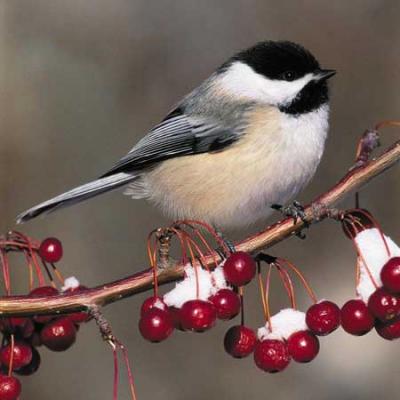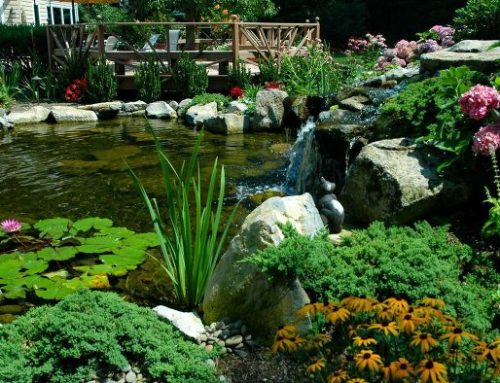In the Northeast, we love our change in seasons. And around this time each year, as winter is on the horizon, Deck and Patio’s blog has offered ideas on trees and bushes whose bark or berries bring color to winter gardens.
Today, however, we’re focusing on a very special and even more lively source of winter garden beauty: colorful avian visitors that can be enticed with just a little effort on our part.
Cardinals
Take the bright red plumage of the Cardinal. The male’s full-bodied red actually gets more striking during winter.
This is when some of their remaining gray-tipped feathers fall off, showing even more vibrant red.
What a picture they make resting on icy branches and snow.
“If you want to attract them, Cardinals love black oil sunflower and safflower seeds,” says Sandra Vultaggio, Horticulture Consultant at the Cornell Cooperative Extension in Riverhead, NY.
It’s helpful to note that Cardinals usually eat early in the morning or late in the evening so make sure feeders are well stocked at these times. Also, being a larger bird, they prefer a larger feeder that won’t sway too much as they eat.
Blue Jays
Blue Jays are another colorful bird that stays around in winter.
These gorgeous birds love to congregate in groups come winter. They also will squirrel food away. Some have witnessed Blue Jays hiding nuts in trees.
And as for sound, they have been known to scare off other birds by imitating the call of hawks.
“They also like nuts and peanuts,” says Vultaggio.
“I use a peanut wreath and fill it with shelled peanuts. This type of feeder attracts a lot of Blue Jays.
They are such fun to watch — not to mention they add a lot of color against the white landscape.”
Chickadees
Chickadees prefer the same type of seeds as the Cardinal: black oil sunflower and safflower. Vultaggio is also delighted by their sounds — ‘they actually say chickadee when they sing.”
Chickadees are vibrant even though, as part of the Titmouse family, they are known for their gray color and lighter bellies.
“They dine primarily on insects, seeds and berries,” adds Vultaggio. “They are active and agile little birds. These little acrobats are a delight to watch when they hang upside down from twigs or at your feeder.
Additional Birds
Vulraggio also puts out suet in winter, which she says attracts other birds including woodpeckers.
“A bird bath is also important. Water is often scarce in the dead of winter.
Of course, you don’t want the water to ice up and there are lots of bird bath heaters, including solar heated bird baths.
Pictured here is a Heated Deck-Mounted Birdbath by Allied Precision.
“You’ll also find that in winter these birds tend to appear in groups since many eyes make it safer to watch out for predators. Birds are such a wonderful way to add color to your winter garden.”
Flora
To achieve color through flora, a previous Deck and Patio blog includes a fairly comprehensive list of flora that will help “lift winter doldrums with outdoor color and texture” — information that we put together also with the help of Sandra Vultaggio.
Winterberry (shown here) is a great example of the color and texture available in winter. This dramatic and colorful bush is from a species of the deciduous holly family and is native to the Northeast.
A slow grower, it loses its leaves each autumn. And, birds love the berries…what more needs to be said.












